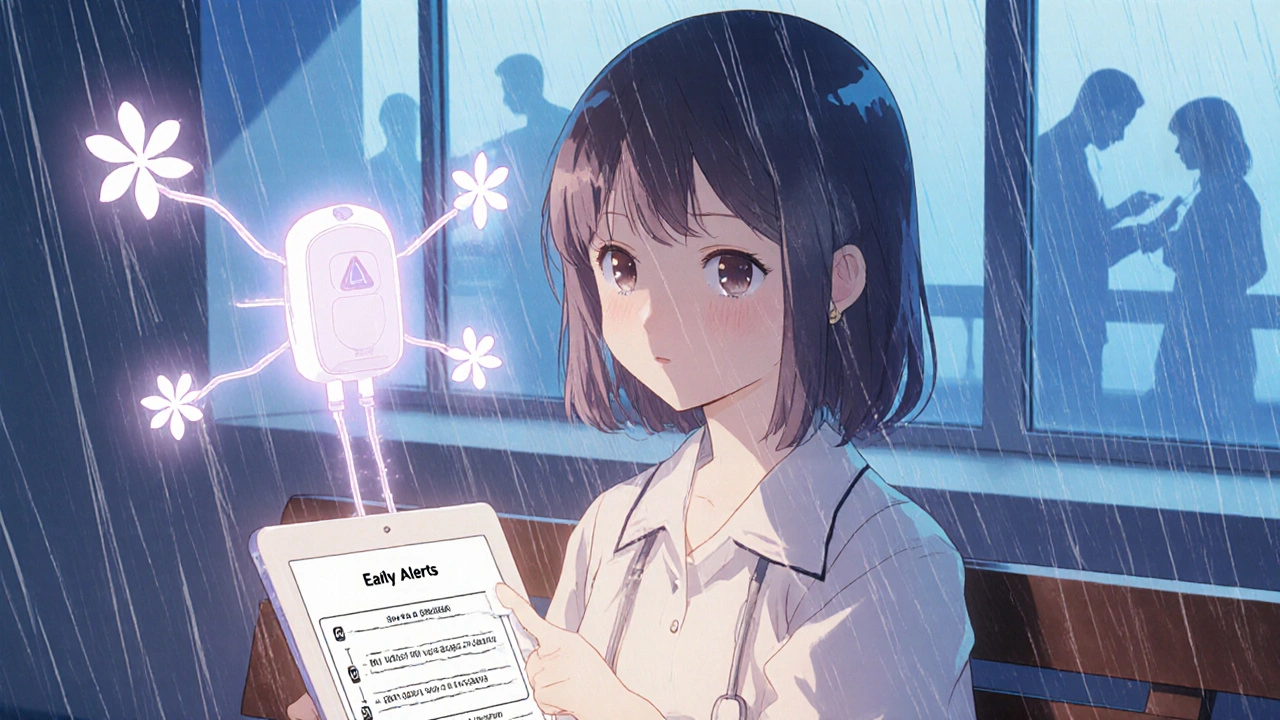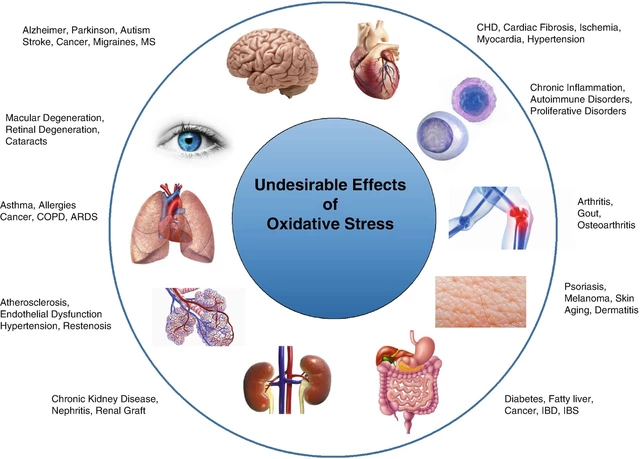
FDA Archive Accessibility Finder
Find FDA Safety Information Availability
Enter details to see if your search query is likely available in the FDA Safety Communications Archive
Enter information to see if your request is available in the FDA archives.
When a drug or medical device turns out to be riskier than first thought, the FDA doesn’t just sit on the information. It issues a public safety communication. These aren’t vague notices - they’re detailed, official alerts that tell doctors, pharmacists, and patients exactly what’s changed, why it matters, and what to do next. But what if you’re looking for a warning from 2012? Or a labeling update from 2017? That’s where the FDA Safety Communications Archive comes in - a free, public record of every official safety alert issued over the last 15 years.
What’s in the FDA Safety Communications Archive?
The archive isn’t one single list. It’s three separate but connected systems, each tracking different kinds of safety updates. The first is the Drug Safety Communications (DSCs), which started being formally archived in 2010. These are the alerts you’ll see when the FDA finds a new risk with a prescription drug - like liver damage from a common painkiller, or an increased risk of heart problems with a diabetes medication. Each one includes the drug name, the specific risk, who it affects, and what actions the FDA recommends.Then there’s the Drug Safety-related Labeling Changes (SrLC) Database, launched in January 2016. This one is more technical. It tracks every single change made to a drug’s official label - the fine print inside the package insert. That includes updates to the Boxed Warning (the strongest warning the FDA can give), new contraindications, changes to side effect lists, or new guidance for pregnant women or elderly patients. If you need to know exactly how a drug’s safety instructions evolved over time, this is your go-to source.
For medical devices, the Medical Device Safety Communications system operates separately. These cover everything from faulty pacemakers to contaminated surgical tools. Since September 2025, the FDA has expanded its Early Alert program to include all medical devices, meaning even smaller or less common products now get public warnings if a serious issue is detected. These alerts often include specific instructions for clinicians - like stopping use of a certain model or checking serial numbers.
How far back does the archive go?
For drug safety communications, you can find records going back to 2010. But here’s the catch: older alerts (2010-2015) are marked as “archived” because the FDA issued newer versions with updated information. That means if you’re researching a drug like Vioxx or Avandia, you won’t find the original 2004 alert - you’ll find the final, consolidated version from 2010 or later. The archive doesn’t preserve every draft or early version; it keeps the most current, accurate version available at the time of archiving.The SrLC Database only includes labeling changes from January 2016 onward. That leaves a gap for anyone studying safety updates between 2000 and 2015. For that, you need the FDA.gov Archive - a separate tool that lets you view old versions of FDA web pages as they appeared years ago. It’s clunky to use, but it’s the only way to see what a safety alert looked like in 2013 before it was rewritten.
For truly historical research - say, tracking FDA actions on aspirin in the 1950s or sulfa drugs in the 1940s - you’ll need to go beyond the website. The National Archives in Philadelphia holds physical and digital records from 1906 to 1978, including internal memos, manufacturer reports, and early correspondence about drug safety. These aren’t online, but you can request access through the National Archives website.
Why is this archive important?
This isn’t just a historical curiosity. Researchers, pharmacists, lawyers, and even patients use this archive every day. A doctor might look up whether a patient’s old medication was ever flagged for a rare side effect. A lawyer building a case against a drug manufacturer will pull archived alerts to prove the FDA knew about the risk years before the injury occurred. A patient with a chronic condition might check if their drug had a history of safety issues before agreeing to a long-term prescription.It also shows how the FDA’s approach has changed. In the early 1900s, Dr. Harvey Washington Wiley ran the “Poison Squad” experiments - volunteers eating food with chemical additives - to prove they were dangerous. That led to the 1906 Pure Food and Drug Act. Today, the system is digital, data-driven, and legally mandated. The 2007 FDA Amendments Act gave the agency clear authority to monitor drugs after they hit the market and force label changes when new risks appear. The SrLC Database exists because of that law - Section 505(o)(4) of the FD&C Act.

How to search the archive effectively
Start at the FDA’s Drug Safety and Availability page. From there, you can click directly into the Drug Safety Communications archive, sorted by year from 2010 to 2024. Use the search bar on the page to type in a drug name, condition, or keyword like “liver toxicity” or “suicidal ideation.”For labeling changes, go to the SrLC Database. You can search by drug name, active ingredient, or even by the specific section of the label that changed - like “WARNINGS AND PRECAUTIONS.” Each entry shows the date the change was made, the reason (e.g., “new post-marketing data”), and the exact text added or modified.
For medical devices, use the Medical Device Safety Communications page. You can filter by device type - implants, diagnostic tools, infusion pumps - and sort by date or recall status. The newer Early Alerts are clearly labeled and often include step-by-step instructions for healthcare providers.
Pro tip: If you’re researching a specific drug, cross-reference it with Drugs@FDA. That’s the FDA’s official list of approved drugs, and it links directly to the safety communications and labeling history for each product.
What the archive doesn’t tell you
Just because the FDA issued a warning doesn’t mean it changed how doctors prescribed the drug. A 2012 study in the Journal of the American Medical Informatics Association found that many safety alerts had little to no effect on prescribing patterns. Some caused immediate drops in use - like the 2011 alert on rosiglitazone. Others were ignored, even when the risk was real.Also, the archive doesn’t include non-official communications. If a drugmaker voluntarily recalls a batch, that’s not always in the FDA archive. If a hospital reports an adverse event that doesn’t meet the threshold for a public alert, it’s not recorded here. The archive only shows what the FDA officially releases.
And while the FDA is improving access - launching a new resource in October 2023 to help researchers find historical drug approval data - it still doesn’t have everything. Pre-2016 labeling changes are missing from the SrLC Database. Older device alerts are harder to find. And there’s no easy way to compare drug and device alerts side by side.

Who uses this archive - and why
- Pharmacists use it to check if a patient’s current meds have a history of dangerous interactions. - Medical researchers study trends - like whether certain classes of drugs (e.g., SSRIs or GLP-1 agonists) consistently trigger specific side effects over time. - Lawyers and regulators use archived alerts as evidence in lawsuits or to evaluate whether a company acted responsibly. - Patients with chronic conditions dig into the archive to understand why their doctor switched their medication or why a drug was pulled from the market. - Journalists use it to track patterns - like how often the FDA warns about drugs for weight loss or mental health.It’s not glamorous work. But if you’ve ever taken a prescription drug, you’ve benefited from this system. Every alert, every label change, every archived warning is part of a 120-year effort to make sure what’s on the pharmacy shelf doesn’t hurt more than it helps.
What’s next for the FDA archive?
The FDA has signaled it’s working on better integration. The October 2023 launch of a new historical drug approval resource suggests they’re trying to close the pre-2016 gap. There are also rumors of a unified search tool that would let you search across drugs, devices, and labeling changes in one place.But the real challenge isn’t technical - it’s behavioral. Even the best archive won’t help if people don’t use it. Doctors still don’t always check safety alerts before prescribing. Patients rarely look up their meds on the FDA site. The system works - but only if the people who need the information actually look for it.
For now, the archive remains one of the most powerful, underused tools in public health. It’s free. It’s transparent. And it’s the only place where you can see exactly how the FDA has responded - over and over - to the hidden risks of modern medicine.
Can I find old FDA drug safety alerts from before 2010?
The official FDA Safety Communications Archive only starts in 2010. For alerts before that, you need to use the FDA.gov Archive tool to view old web pages, or visit the National Archives in Philadelphia, which holds physical records from 1906 to 1978. There’s no single online database for pre-2010 alerts.
Is the SrLC Database the same as the Drug Safety Communications?
No. Drug Safety Communications are public alerts that explain risks and recommend actions. The SrLC Database is a technical record of exact changes made to a drug’s official labeling - like what text was added to the Boxed Warning or Contraindications section. One tells you what happened; the other shows you exactly how the label changed.
How do I know if a safety alert was effective?
The FDA archive doesn’t track that. But research shows mixed results. Some alerts, like those for rosiglitazone or fen-phen, caused immediate drops in prescriptions. Others had little to no effect. Effectiveness depends on how clear the message is, who it’s sent to, and whether doctors and patients trust the source.
Can I download data from the FDA archive?
Yes, but not in one easy file. The SrLC Database lets you download search results as CSV files. Drug Safety Communications are available as individual PDFs. There’s no bulk download of the entire archive. Researchers often use web scraping tools to collect multiple alerts for analysis, but you must follow FDA’s terms of use.
Are medical device alerts as detailed as drug alerts?
They’re different. Drug alerts focus on side effects, dosing, and interactions. Device alerts focus on mechanical failures, contamination, or design flaws. Since September 2025, all medical device alerts include Early Alerts for the most serious risks, and they often include step-by-step instructions for clinicians - like how to identify a faulty device by serial number.
What should I do if I can’t find a specific warning?
First, double-check the spelling of the drug or device name. Then try searching by active ingredient instead of brand name. If you still can’t find it, contact the FDA’s Division of Drug Information at [email protected] or call (855) 543-3784. They can help locate older or obscure communications.
Is the FDA archive reliable?
Yes. The FDA Safety Communications Archive is the official, legally mandated record of drug and device safety updates. It’s updated regularly, reviewed by medical experts, and based on data from post-market surveillance, clinical studies, and adverse event reports. It’s the most trusted source for this information in the U.S.






There are 9 Comments
Suzan Wanjiru
I use this archive all the time when reviewing patient med histories. Found a 2013 alert on metformin and lactic acidosis that saved a guy from a bad reaction last month. No fluff, just facts. The SrLC Database is gold if you need to trace exact label changes.
Kezia Katherine Lewis
The granularity of the SrLC Database is a game-changer for pharmacovigilance workflows. Post-marketing surveillance data triangulated against labeling amendments provides longitudinal regulatory intelligence that’s otherwise inaccessible. This isn’t just archival-it’s epistemic infrastructure.
Henrik Stacke
Wow. Just… wow. I came here for a quick look and ended up reading for an hour. The fact that we have this level of transparency in drug safety is honestly one of the few things that still gives me faith in institutions. The FDA didn’t have to do this. They chose to. And it matters.
Manjistha Roy
Kane Ren
It’s crazy how many people still don’t know this exists. I tell every new med student I mentor. This is the kind of thing that turns good clinicians into great ones. You don’t just treat patients-you understand the history behind their prescriptions.
Charmaine Barcelon
This is all nice and fancy but nobody reads it. Doctors just prescribe. Patients just take. And the FDA just posts. It’s all just theater. Why bother if no one changes anything? I’ve seen it. Nothing changes.
Karla Morales
OMG I JUST FOUND A 2014 ALERT ON MY MED 😱 The FDA knew about the serotonin syndrome risk in 2013 and still let it stay on the market?? This is wild. I’m printing this out and taking it to my doctor tomorrow. #FDAExposed #DrugSafety
Javier Rain
Don’t let the naysayers get you down. This archive is a weapon. Lawyers use it. Researchers use it. Patients use it. If you’re a clinician and you’re not using this, you’re doing your job half-blind. Get in there. Search your top 5 scripts. You’ll be shocked what you find.
Laurie Sala
But what about the ones they NEVER warned about? The ones that got pulled quietly? The ones that killed people and no one ever knew? This archive is just the tip of the iceberg… and it’s still not enough…
Write a comment
Your email address will not be published. Required fields are marked *